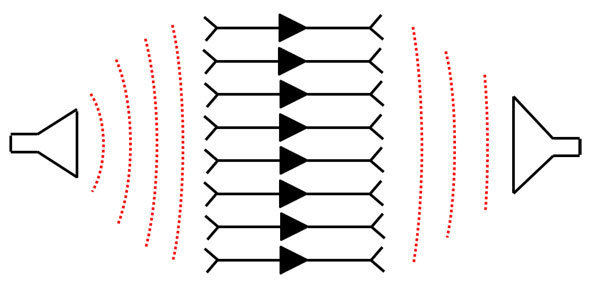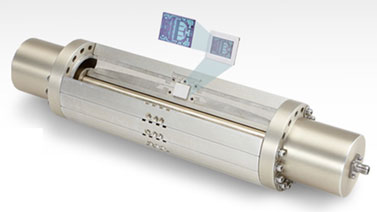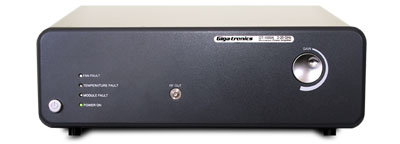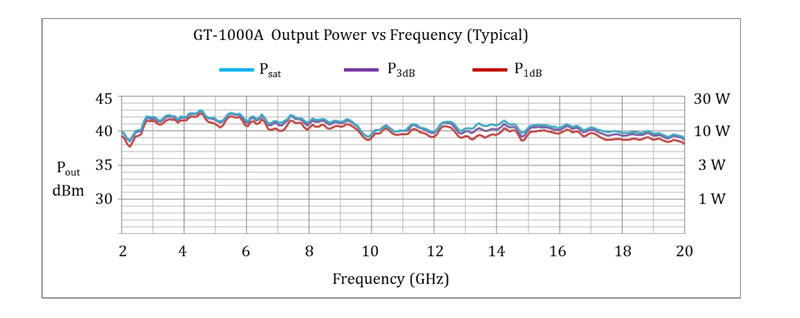|
|||||||||||||||
|
RF/Microwave Instrumentation Amplifiers Benefit from Spatially Power Combined Parallel-MMIC Amplifier
click here to download the full copy RF/Microwave Instrumentation amplifiers are bench top and system amplifiers used to overcome cable and insertion loss in test systems, to boost the available power from signal generators and vector network analyzers (VNAs), to drive antennas in EMC radiated susceptibility testing, as well as for applications in medical, materials, chemical and other diverse disciplines. Power amplifiers have application whenever signal levels need to be boosted. Instrumentation amplifiers are typically characterized by broadband frequency range, high gain with relatively flat frequency response, low noise and wide linear range. Instrumentation amplifiers can be either solid-state power amplifiers (SSPA) or traveling wave tube amplifiers (TWTA) depending on the power level. TWTAs provide the highest power levels available, but solid-state power amplifiers are continually increasing in capability, and the advantages that solid-state technology offers over vacuum tube technology are very significant. While the recent advances in GaN semiconductor technology is enabling the design of higher power narrowband solid-state amplifiers, the enabling technology for higher power broadband Instrumentation amplifiers is the GaAs MMIC (Microwave Monolithic Integrated Circuit). GaAs MMIC power amplifiers are available covering frequency ranges from 10 MHz to 65 GHz with power levels approaching several Watts. The challenge for the designer of Instrumentation amplifiers is that to achieve higher powers, power from the individual MMIC amplifiers have to be combined, and the loss from traditional methods of power combining grows geometrically as more amplifiers are added. Distributed amplifier designs, using classical planar power combining networks suffer loss and size as the bandwidth and number of combined devices increase. See Figure 1. The result is that the practical attainable bandwidth when combining a large number of devices is typically limited to 3:1, and a point of diminishing returns is reached as the combining loss approaches the gain of the devices.
Figure 1) Conventional Planar Power Combining Spatial power combining can be thought of as electromagnet (EM) field propagation, distributed amplification and EM field power combining. This is represented in the 2D diagram in Figure 2. The actual EM field and physical implementation is three dimensional.
Figure 2) Representation of Spatial Power Combining Spatial power combining, developed and patented in the Spatium™ implementation by CAP Wireless of Newbury Park, California, is a unique structure providing an optimum method of achieving multiple device power combining. See Figure 3.
Figure 3) Spatium™ Amplifier Core Spanawave provides RF/Microwave Instrumentation Amplifiers using the Spatium™ Amplifier Core. See Figure 4.
Figure 4) Spanawave/Giga-tronics GT-1000A Microwave Power Amplifier designed using a 2 GHz to 20 GHz Spatium™ Amplifier Core Solid-State parallel-MMIC technology offers higher power, flat frequency response and a wide linear operating range. Figure 5 below shows the GT-1000A typical output power levels for saturated power, P1dB and P3dB.
Figure 5) Spanawave/Giga-tronics GT-1000A Microwave Power Amplifier Typical Output Power Spatial combining can be visualized as a coaxial guide wave structure, combining the power of many amplifying MMIC devices using free space or air as the power dividing/combining medium. This approach spreads and gathers microwave energy across a very broad frequency spectrum with low thermal noise, minimal harmonic and intermodulation distortion, supporting moderate to high power levels. Parallel identical channels minimize combining loss, which is essentially the same as for one channel. The uniformity of the MMICs and the intrinsic symmetry of the structure enable nearly identical phase and amplitude through all amplification channels, resulting in high combining efficiency. That combined with the very broad frequency range provides outstanding pulse performance. Also, because of the high number of combined devices, the RMS phase noise is less than that of a single device and significantly lower that from a comparable TWTA. Table 1 below summarizes a performance comparison between spatially combined solid-state Parallel-MMIC amplifiers and TWTA’s. Table 1) Spatium™ Amplifier Technology versus TWTA Technology
In conclusion, the Spanawave/Giga-tronics GT-1000A Microwave Power Amplifier designed using a Spatium™ Amplifier Core is a high-performance RF/Microwave Instrumentation amplifier for bench top and ATE system applications. Providing solid-state reliability and unique electrical performance, the GT-1000A is ideal for applications such as laboratory instrumentation, EMC test, defense EW/radar test and commercial communications test. |
| Home | Company | Contact Us | Copyright © All rights reserved. | |||






